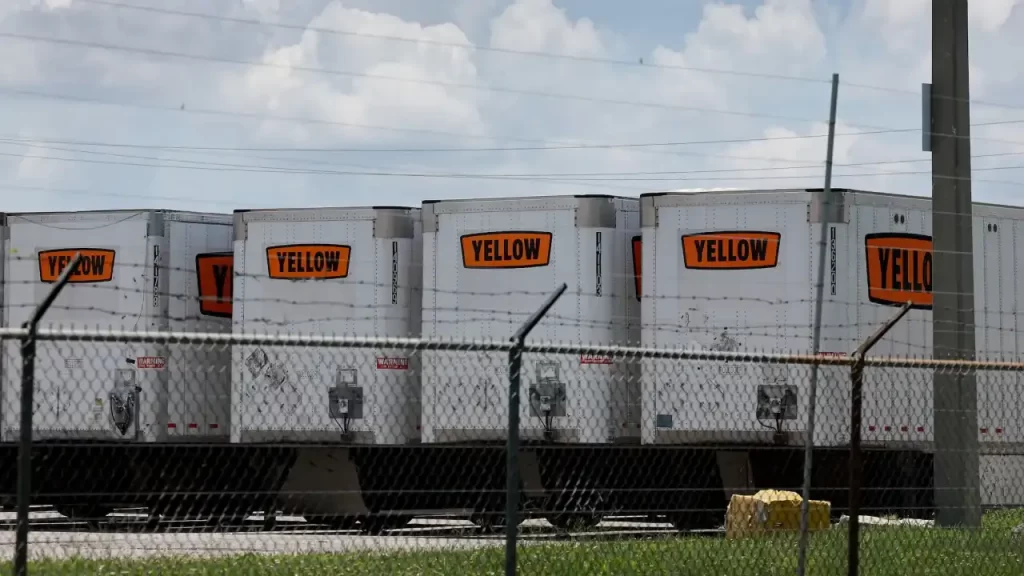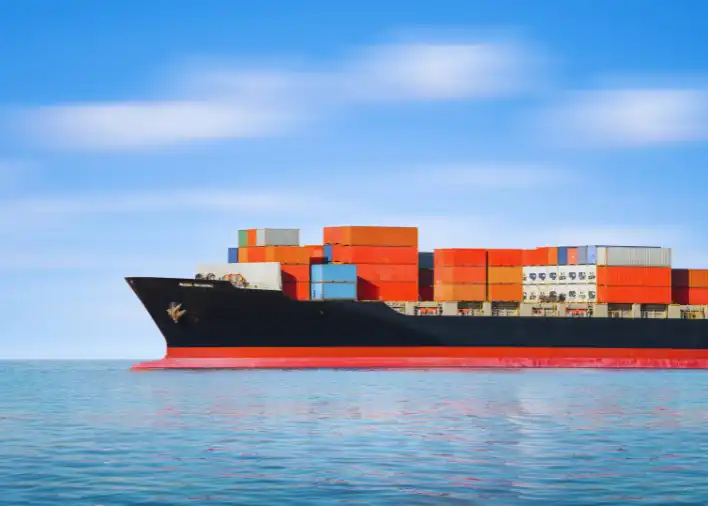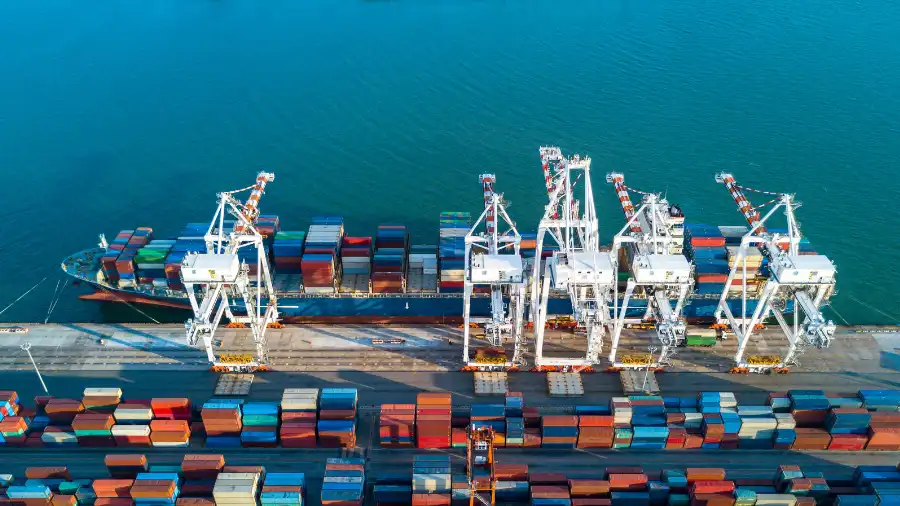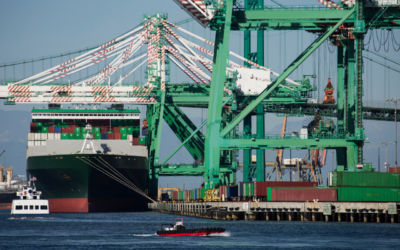1. End of an Era: Trucking Giant Yellow Shuts Down, Putting 30,000 Out of Work

Yellow Corp., a 99-year-old trucking company once holding a significant position in the industry, has ceased operations, leaving 30,000 workers unemployed. The closure followed a prolonged battle with the Teamsters Union and a series of mergers, including Roadway Express, New Penn, and Holland, which formed the conglomerate known as Yellow Corp. Financial challenges, coupled with union disputes, took a toll on the company’s stability. Despite efforts to stay afloat, Yellow Corp. succumbed to financial strain, signaling the end of an era in the industry. This shutdown poses potential disruptions to supply chains that relied on Yellow’s services, emphasizing the importance of agile and robust operations in the ever-changing logistics landscape. It also sheds light on the need for companies to adapt and innovate to stay ahead in these challenging times.
The closure of Yellow Corp. not only affects its 30,000 employees but also highlights the broader challenges faced by the U.S. trucking industry. The company’s struggles were exacerbated by massive debts from previous mergers and difficulties in integrating operations. As Yellow Corp. files for bankruptcy, it raises questions about the impact on supply chains, especially given the company’s history of providing cost-effective shipping services for major retailers like Walmart and Home Depot. This incident serves as a stark reminder of the importance of financial stability and effective labor relations in sustaining long-term success in the transportation sector. As the trucking industry navigates the aftermath of Yellow Corp.’s closure, we will be closely monitoring its implications on the broader logistics landscape and exploring strategies to build a more sustainable future.
Ready to navigate the ever-evolving logistics landscape and supercharge your supply chain efficiency?
Look no further! Get in touch with us today and unlock the power of our industry-leading solutions. Discover how we can help you overcome challenges, optimize operations, and outpace the competition. Let’s embark on a transformative journey to elevate your logistics into a strategic advantage!
Above is our summary that captures the highlights in order to save you time, but you can read the full report on CNN and the Wall Street Journal.
2. Relief for Importers: Ocean and Road Shipping Show Positive Trends Amid Uncertainty

Great news for importers dealing with tight carrier capacity and soaring freight rates during the pandemic! Recent reports indicate relief on the service side of transportation. The latest Ocean Shipping Index from e2open shows a significant reduction in delivery time for goods moving from Asia to North America, with a 24-day improvement compared to the same quarter in 2022. Unloading inbound cargo from ships to movement inland has also become more efficient, with a 12-day decrease from last year’s first quarter. These improvements are driven by a decline in demand for goods shipping out of Asia.
Over-the-road shippers also see positive changes. e2open’s Road Freight Market Index reports plentiful truck capacity for agricultural goods in April, with dry van rates down 35.9% from April 2022. Refrigerated transport rates fell by 20.7% year-over-year. Primary tender acceptance by carriers rose to 94.3% in April, and on-time performance is now above pre-COVID levels. Despite rate reductions, higher inflation remains a concern, urging shippers to make solid commitments to carriers rather than relying solely on the volatile spot market. Supplier diversification and regional sourcing are becoming more popular amid lingering economic fears. Though current trends are favorable, shippers should remain vigilant in uncertain times and avoid complacency.
Above is our summary that captures the highlights in order to save you time, but you can read the full article on Supply Chain Brain
3. Navigating Troubled Waters: Panama Canal Implements Drought-Driven Transit Restrictions

The Panama Canal Authority (ACP) has taken significant steps to address the severe drought situation gripping the region. In response to the ongoing water scarcity and lower levels in Gatun Lake caused by this year’s El Niño, the ACP has announced restrictions on daily vessel transits. Starting from July 30, 2023, the daily transit capacity of the Panama Canal will be adjusted to an average of 32 ocean-going vessels per day. This measure aims to conserve water and prevent further draft restrictions, despite previous water-saving efforts and the onset of the rainy season.
The drought’s impact is evident in the two most recent months, with daily transits dropping to an average of only 32.58 and 32.13 in May and June, respectively. The canal’s maximum sustainable capacity, which includes both Panamax and expanded Neopanamax locks, is approximately 38-40 vessels per day. However, the ACP has found it necessary to implement this climate-related limitations for the first time since the expansion of the Panama Canal in 2016.
As the drought continues, we are closely monitoring the situation. The ACP emphasizes its commitment to ensuring the safe and efficient operation of the waterway and may implement additional measures in the future if needed. To minimize delays, the ACP urges customers to use the Transit Reservation System, especially as daily transits decrease. Containerships will receive priority during specific booking periods, but vessels without reservations may face longer waiting times. This evolving situation underscores the critical importance of the Panama Canal in global trade and the challenges posed by changing climate conditions for maritime operations.
Stay informed on Panama Canal restrictions and drought impacts. Plan ahead and optimize your supply chain during these challenging times.
Read our comprehensive article with ongoing updates: Intermodal Advisory: Key Updates on the Panama Canal Drought.
Above is our summary that captures the highlights in order to save you time, but you can read the full update HERE
4. Strike Over, But Recovery Ahead: Navigating Supply Chain Challenges

The labor strike at Canada’s West Coast ports has come to an end as both the labor union and port ownership reached an agreement presented by federal mediators. The strike, which lasted for 13 days, has left a significant impact on the Canadian and U.S. economies, causing potential supply chain congestion from ocean cargo to inbound rails and affecting sectors such as chemicals, oil, lumber, and construction minerals. While the strike is over, the road to supply chain recovery will be a challenging one, as the ramping back up of operations is expected to take weeks. The combined delays from vessel unloading to container loading onto rails could extend up to two months for shipments arriving in the U.S. Vessels that remained unserviced during the strike have led to disruptions, with vessels waiting to enter Vancouver and Prince Rupert. Shippers are anticipated to reroute some imports to U.S. West Coast ports, resulting in further vessel capacity cuts.
The strike has already inflicted damage on the U.S. supply chain, with Canadian rail intermodal down almost 50% compared to last year. Industries such as forest products, oil, petroleum, non-metallic minerals, and chemicals have been heavily impacted. The National Association of Chemical Distributors reported tens of millions of dollars worth of inventory stuck on ships outside the Port of Vancouver, affecting essential food additives, acids, and other vital products. The strike’s conclusion marks a crucial moment for supply chain stability and resilience, with billions of dollars in trade tied up between the U.S. and Canada. However, rebuilding the reputation of Canada’s largest gateway and ensuring smooth cargo operations will be a collaborative effort in the coming weeks.
Let’s navigate these supply chain challenges together and find resilient solutions for smoother trade in the future. Contact us today!
Above is our summary that captures the highlights in order to save you time, but you can read the full article on CNBC
5. Cybersecurity Alert: Nagoya Port Recovers from Ransomware Attack

Japan’s largest port, Nagoya, recently experienced a ransomware attack carried out by the pro-Russian group LockBit 3.0, disrupting its operations for over two days. The attack, which targeted the Nagoya Port Unified Terminal System (NUTS), caused delays in loading and unloading containers from trailers. The port authorities discovered the ransomware infection after a message appeared on a printer indicating the system’s compromise. The attack had implications for automaker Toyota Motor, one of the companies utilizing the port for its shipments, as imported and exported parts couldn’t be loaded. While the port has resumed operations, the incident highlights the growing cybersecurity threats faced by vital transportation and logistics facilities worldwide.
Such attacks can have cascading effects, leading to significant disruptions in the supply chain and impacting various industries relying on the efficient functioning of ports. As cyber threats continue to evolve, it’s crucial for organizations to adopt robust cybersecurity measures to protect critical infrastructure and maintain business continuity. The Nagoya Port ransomware attack serves as a stark reminder of the need for vigilance and proactive cybersecurity strategies to safeguard against potential future attacks. This incident comes amid a rising trend of cyberattacks on important transportation hubs globally, reinforcing the urgency for a comprehensive approach to cybersecurity in the logistics sector.
Above is our summary that captures the highlights in order to save you time, but you can read the full article on CS Online


